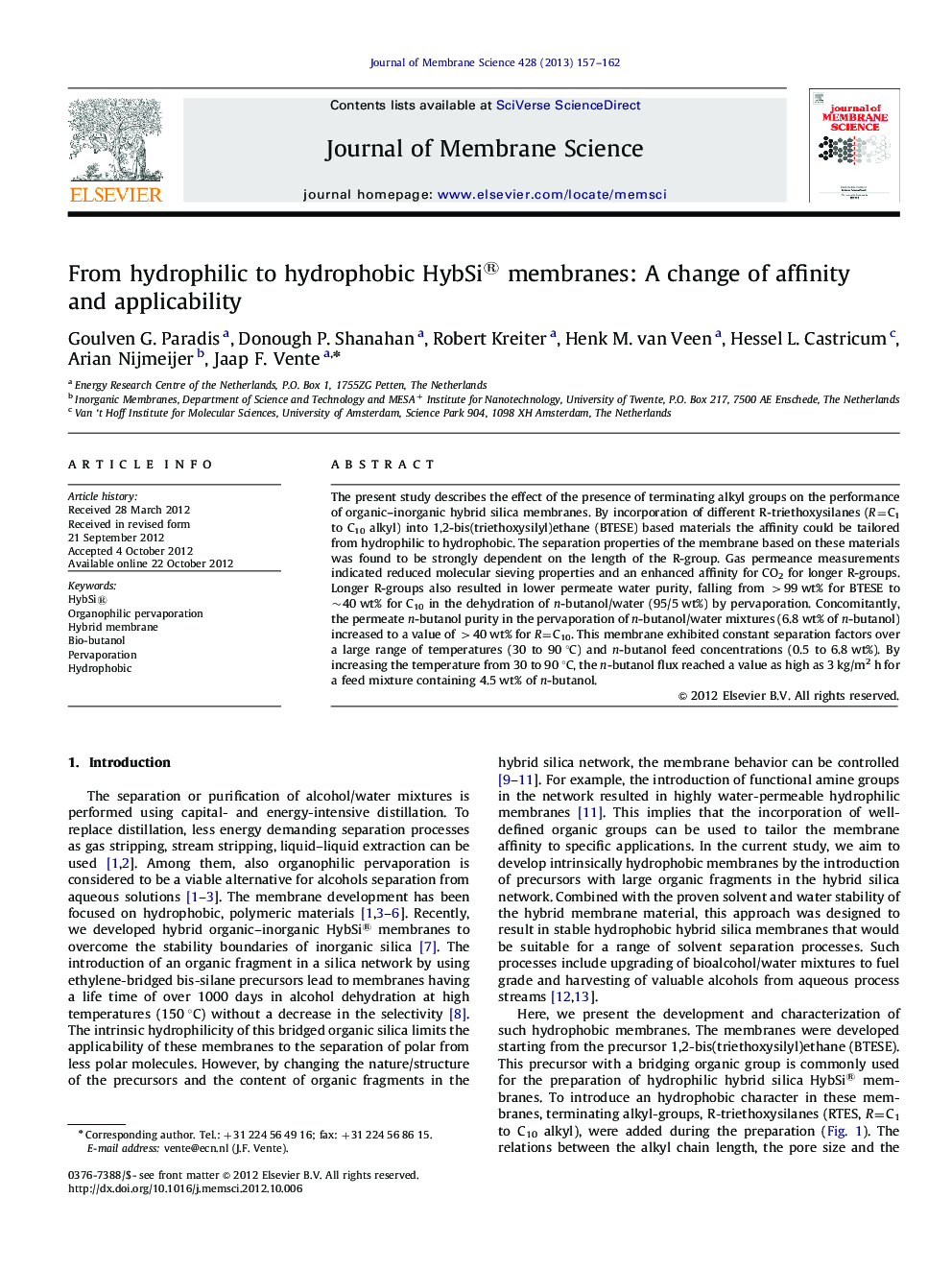| Article ID | Journal | Published Year | Pages | File Type |
|---|---|---|---|---|
| 634606 | Journal of Membrane Science | 2013 | 6 Pages |
The present study describes the effect of the presence of terminating alkyl groups on the performance of organic–inorganic hybrid silica membranes. By incorporation of different R-triethoxysilanes (R=C1 to C10 alkyl) into 1,2-bis(triethoxysilyl)ethane (BTESE) based materials the affinity could be tailored from hydrophilic to hydrophobic. The separation properties of the membrane based on these materials was found to be strongly dependent on the length of the R-group. Gas permeance measurements indicated reduced molecular sieving properties and an enhanced affinity for CO2 for longer R-groups. Longer R-groups also resulted in lower permeate water purity, falling from >99 wt% for BTESE to ∼40 wt% for C10 in the dehydration of n-butanol/water (95/5 wt%) by pervaporation. Concomitantly, the permeate n-butanol purity in the pervaporation of n-butanol/water mixtures (6.8 wt% of n-butanol) increased to a value of >40 wt% for R=C10. This membrane exhibited constant separation factors over a large range of temperatures (30 to 90 °C) and n-butanol feed concentrations (0.5 to 6.8 wt%). By increasing the temperature from 30 to 90 °C, the n-butanol flux reached a value as high as 3 kg/m2 h for a feed mixture containing 4.5 wt% of n-butanol.
► First hydrophobic microporous hybrid silica membranes. ► Low water selectivity in the pervaporation of n-butanol/water (95/5 wt%) mixtures. ► Butanol selective membranes in pervaporation of n-butanol/water (5/95 wt%) mixtures. ► Constant n-butanol selectivity over a large range of operating conditions. ► Total fluxes as high as 3 kg/m2 h at 90 °C.
